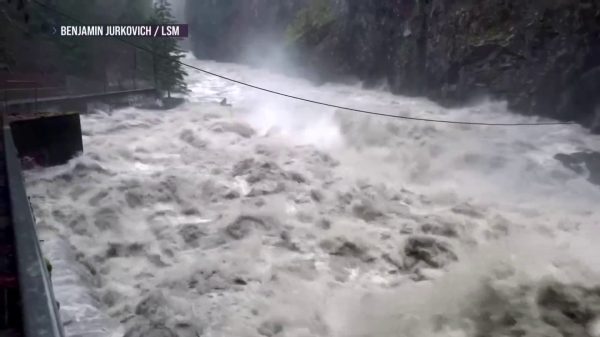The National Aeronautics and Space Administration spotted Luna-25 smashed with the moon on August 19 during a maneuver aimed to prepare it for landing.

National Aeronautics and Space Administration photographed the crash site of Luna-25 (Photo: Russian lifeboat)
Russia’s Failed Luna-25 Lander Crash Site Spotted by National Aeronautics and Space Administration Moon Orbiter
According to Space, the final resting site of Russia’s failed Luna-25 lunar lander claims to have been located by the National Aeronautics and Space Administration. Luna-25, Russia’s first moon mission in 47 years, smashed with the lunar surface on August 19, during a maneuver aimed at preparing it for a landing attempt a few days later.
The crash created a crater, which the National Aeronautics and Space Administration’s keen-eyed Lunar Reconnaissance Orbiter (LRO) most likely discovered last week.
The managers of LRO went in search of Luna-25’s tomb, using an estimated impact site provided by Roscosmos, Russia’s space agency.
On August 24, the LRO crew imaged the location with the probe’s Lunar Reconnaissance Orbiter Camera (LROC), then compared the new photos to prior LROC images of the same region, most recently in June 2022. This research revealed a brilliant, new crater on the moon that had been gouged out in the previous 14 months.
“Since this new crater is close to the Luna-25 estimated impact point, the LRO team concludes it is likely to be from that mission, rather than a natural impactor,” National Aeronautics and Space Administration officials stated in a statement announcing the discovery today (Aug. 31).
READ ALSO: Most Dangerous Cities In South Dakota As Of 2023
The launch of Luna-25
On August 10, Luna-25 lifted off, marking the first Russian moon mission since 1976, when Russia was still a part of the Soviet Union. The name of the new mission was an attempt to commemorate those proud bygone days; the 1976 effort, a successful sample-return mission, was dubbed Luna-24.
Luna-25 aspired to be the first probe to softly land near the moon’s south pole, a location regarded to be rich in water ice capable of supporting human colonies.
However, its failure handed up the title to Chandrayaan-3, an Indian mission that launched on July 14 and successfully landed on August 23. Chandrayaan-3 is still investigating its polar location with a lander and a small rover that are designed to operate for one lunar day, or approximately 14 Earth days. At the conclusion of that time, lunar nightfall is predicted to render both robots inoperable.
READ ALSO: A New Online Crime Reporting System Announce By The Sarasota County Sheriff’s Office

















































